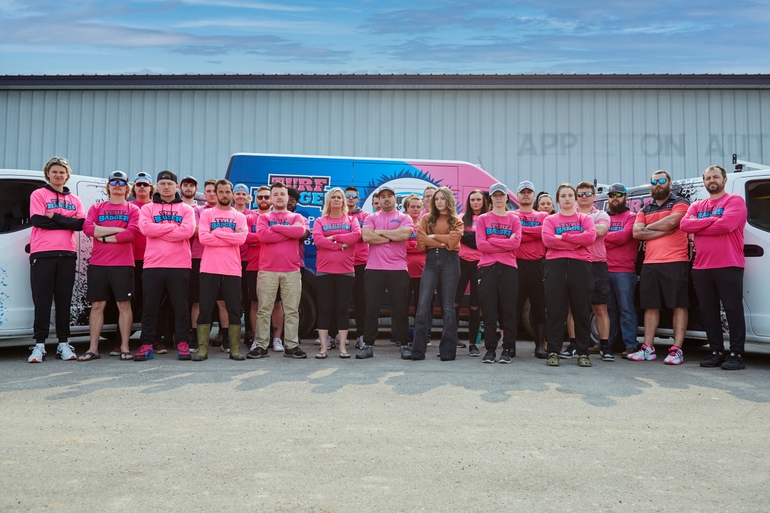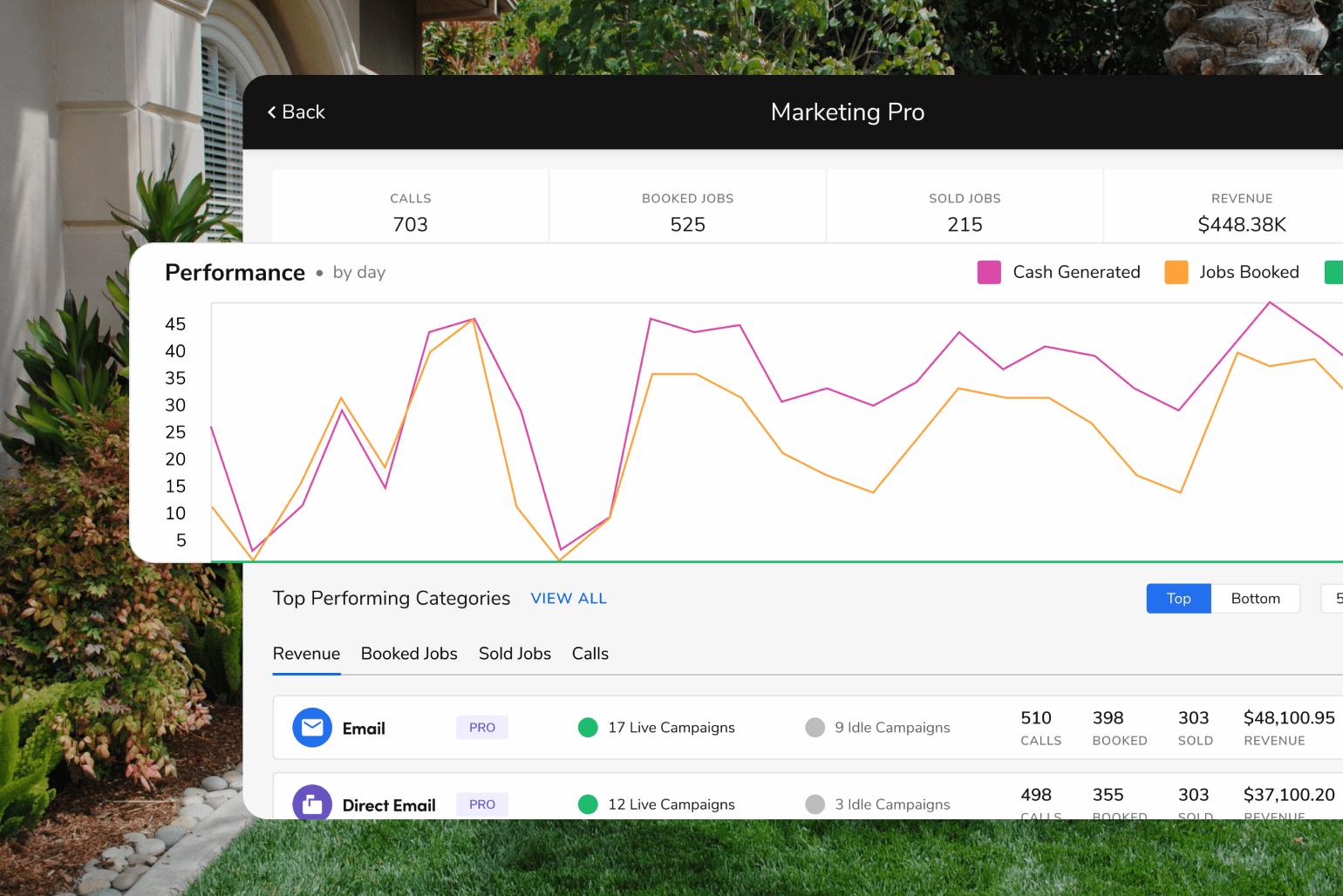Lawn Care Business Profit Margins: A Complete Guide

Understanding Lawn Care Business Profit Margins
Running a successful lawn care business requires more than a green thumb. While a passion for creating lush landscapes and pristine lawns is undoubtedly essential, understanding the financial components is critical for sustainable growth. One of the key metrics every lawn care and landscaping business owner should master involves calculating profit margins.
Whether you're a young startup, a seasoned lawn care professional seeking to refine your financial strategies, or an entrepreneur starting a new business, this guide walks through the key formulas and concepts needed for calculating profit margins. We’ll also cover how lawn care software can help you boost profits and grow your service business.
What Is the Average Profit Margin for Lawn Care Businesses? Put simply, profit margin is a financial metric that represents the percentage of profit a company earns from its total revenue. Profit margin is a key indicator of a business's profitability and ability to manage costs.
Several factors can influence the profit margin of a lawn care business, including labor costs, the costs of goods sold (COGS), equipment and maintenance expenses, fuel costs, overhead costs, obtaining new customers, and more.
To calculate profit margin, divide your net profit (profit after deducting all expenses, including taxes and interest) by the total revenue. Then, multiply the result by 100 to express it as a percentage.
While profit margins vary widely from business to business, one study shows the typical net profit margin in the lawn care and landscape industry ranges from 5% to 20%.
How to Calculate the Profit Margin of Your Lawn Care Business
Next, we’ll walk through the key factors and formulas needed to calculate the profit margin of a lawn care or landscaping company. For this example, we’ll use a fictitious small business named Mike’s Lawn Care with a total revenue of $500,000.
1. Calculate your gross profit
Gross profit is your company's total revenue minus the costs of goods sold, or COGS. Gross profit includes variable costs, such as payroll and cost of materials, but doesn’t include fixed costs, such as mortgage payments or costs associated with starting a new business. For this example, Mike’s Lawn Care spends $250,000 on variable expenses.
Gross profit = $500,000 - $250,000 = $250,000
2. Identify operating expenses
Operating expenses include the fixed costs to run your business operation, such as rent, utilities, administrative costs, and accounting. These costs remain stable no matter how many lawns you mow or landscapes you brighten.
In this example, Mike’s Lawn Care has the following operating expenses:
Rent: $30,000
Utilities: $5,400
Administrative: $60,000
Accounting: $12,000
Operating expenses = $107,400
3. Calculate net profit
Net profit is your actual profit after subtracting all your operating expenses from your gross profit. Net profit, also referred to as the bottom line, is the best metric to measure the profitability of a lawn care business.
Net profit = $250,000 - $107,400 = $142,600
4. Calculate profit margin
Finally, to calculate profit margin, divide your net profit by the total revenue, then multiply the figure by 100 to see your profit margin as a percentage.
Profit margin = $142,600 / $500,000 x 100 = 28.52%
In our example, Mike’s Lawn Care’s profit margin of 28.52% is well above the average of 5% to 20%.
How to Improve the Profit Margin of Your Lawn Care Business
Next, let’s look at ways to increase the profit margin for your lawn care company. The good news is there are multiple ways to affect profit margins, from lowering business expenses and direct costs to generating more leads by marketing your business on social media. In the shoulder season, you can also offer additional services, such as snow removal.
We’ll also explain how business software enables landscaping services to boost profit margins by streamlining processes and optimizing business performance.
Increase operational efficiency and reduce costs
Increasing operational efficiency offers an excellent way to grow your profit margins. In the digital age, landscape professionals increasingly use comprehensive business management software to streamline and automate their businesses.
For example, software with scheduling and routing capabilities uses AI to significantly reduce drive time to the job site so technicians can focus on providing quality work and creating happy homeowners. Less time spent in the truck lessens fuel costs while creating more time for your company to generate additional revenue and, hence, higher margins.
Establish value-based pricing
Value-based pricing is a strategy where the price of a product or service is determined based on the perceived value it provides to customers. For value-based pricing, lawn care businesses must understand their target customers and their specific needs. The company can justify a higher price markup by aligning the product or service with these needs.
Consider providing different service packages at varying prices to cater to customer needs and budgets. For example, offer premium pricing for specialized services that incur minimal extra costs—such as fertilizing or applying mulch—thus increasing the margin of those services.
Invest in training and labor management
By investing in training, your field technicians can improve their skills, allowing them to complete tasks more efficiently and with higher quality. It also expands the scope of services they can provide, raising the average ticket and improving margins.
With a field management solution like FieldRoutes, the software automatically sends the best technician to each landscaping job based on their skill set. This ensures the tech has the right experience to perform the job, boosting customer satisfaction.
Implement software and automation tools
All-in-one business management software, such as FieldRoutes, simplifies all aspects of running a lawn care business by automating scheduling, route optimization, and administrative tasks. Using automation for repetitive tasks reduces labor costs and enhances productivity while preventing mistakes.
With the FieldRoutes online customer portal, businesses can send automatic payment notifications to ensure customers pay their invoices quickly and on time. Homeowners can also pay invoices online using a credit card, reducing the workload for your techs and office staff. Automation also enables your staff to focus on tasks that generate additional revenue for your business versus wasting time on manual processes.
Target high-value customers
Real-time reporting provides tangible business insights that help lawn care services target customers with the highest revenue. With FieldRoutes® Marketing Suite, an add-on feature of the core software, you can monitor where leads come from, understand the leads that bring in the most revenue, and determine the true ROI of your marketing efforts. Once you identify your high-value customer segments, you can offer club memberships and referral programs to generate additional revenue to increase your profit margins, not to mention offer value-based pricing.
Optimize Your Operations With Lawn Care Business Software
As a lawn care business owner, you know a great profit margin is paramount to running a successful company. You can also increase your margins by streamlining business operations, reducing manual processes, and leveraging real-time business analytics.
When you simplify operations with business management software like FieldRoutes, employees can focus on lawn mowing and providing outstanding customer service, ultimately raising your revenue and profit margins.
Ready to level up your lawn care business operations and grow your margins? Start today with a free demo.





